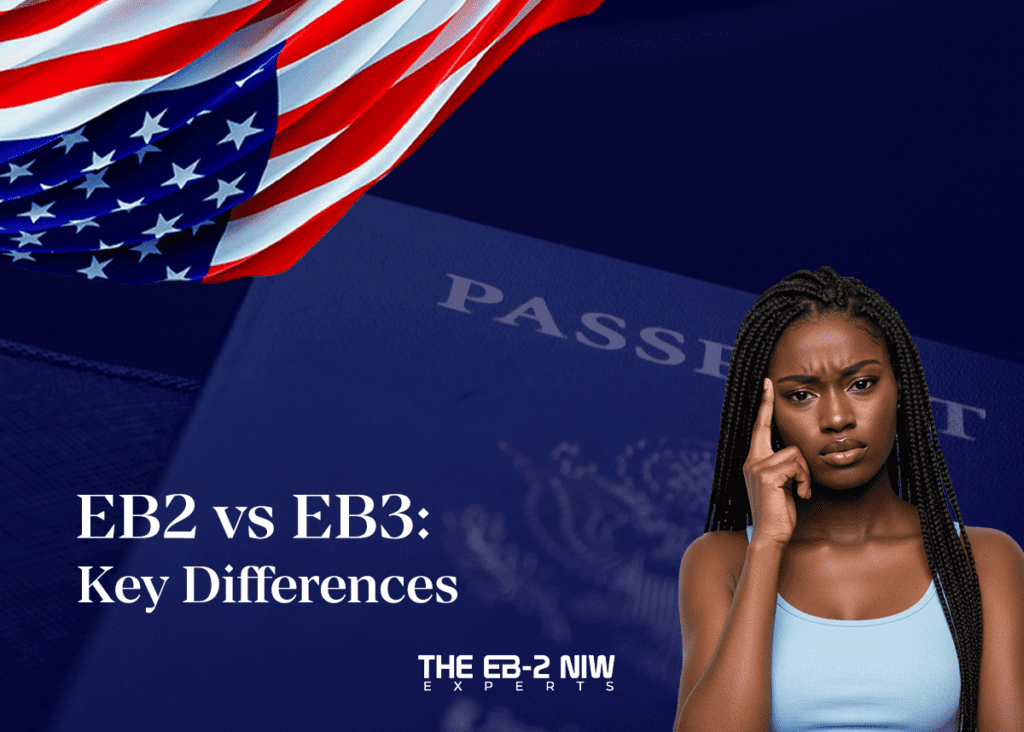
EB2 and EB3
The EB2 and EB3 visa categories are both employment-based green cards opportunities for foreign nationals who wish to work in the United States.
However, some key differences between the two categories, like the EB2 and EB3, can be confusing and overwhelming.
But you are in the right place at the right time, as we will simplify each EB category, compare the key differences, and allow you to check your eligibility for free.
EB2 Visa
The EB-2 visa is for professionals with advanced degrees or exceptional ability in the sciences, arts, or business. It is also known as the “Professional” or “Exceptional Ability” visa.
According to the USCIS, to qualify for an EB-2 visa, you must meet one of the following criteria:
- Master’s degree or equivalent in your field of expertise.
- At least five years of progressive experience in your field.
- A license or certification from a professional association.
- Significant media coverage of your work.
- Membership in a professional association that requires outstanding achievements.
- Major awards or prizes for your work.
EB3 Visa
The EB-3 visa is solely for skilled workers, professionals, and other workers. It is also known as the “Skilled Worker” or “Other Worker” visa.
To qualify for an EB3 visa, you must meet one of the following criteria:
- At least two years of experience in your field.
- A job offer from a U.S. employer.
- A labor certification from the Department of Labor.
What are the Four Key Differences between EB2 and EB3?
Okay, here’s a table summarizing the four key differences between the EB2 and EB3 visa categories:
| Feature | EB-2 Visa | EB-3 Visa |
|---|---|---|
| Eligibility Requirements | Higher requirements, typically requiring an advanced degree (Master’s or higher) or exceptional ability. | Lower requirements, including a bachelor’s degree, at least two years of job experience, or skilled labor. |
| Application Complexity | Generally more complex, often requiring more substantial documentation to prove advanced qualifications or exceptional ability. | Typically less complex than EB2, with requirements focusing on job skills and labor certification. |
| Processing Time | Can sometimes have longer processing times depending on backlogs, especially for certain nationalities, but this can fluctuate. | Processing times can also vary, and sometimes EB3 can face longer backlogs for certain categories and nationalities. |
| Visa Availability (Backlogs) | Historically, EB2 has often had less severe backlogs than EB3, but this can change based on country of origin and demand. | EB3 often experiences longer backlogs, particularly for the “Other Workers” subcategory and for applicants from high-demand countries. |
So, Which Visa is Right for You?
The best way to determine which visa category is right for you is to consult with an immigration attorney. They can help you understand the requirements of each category and provide your personalized recommendations that is best for you.

